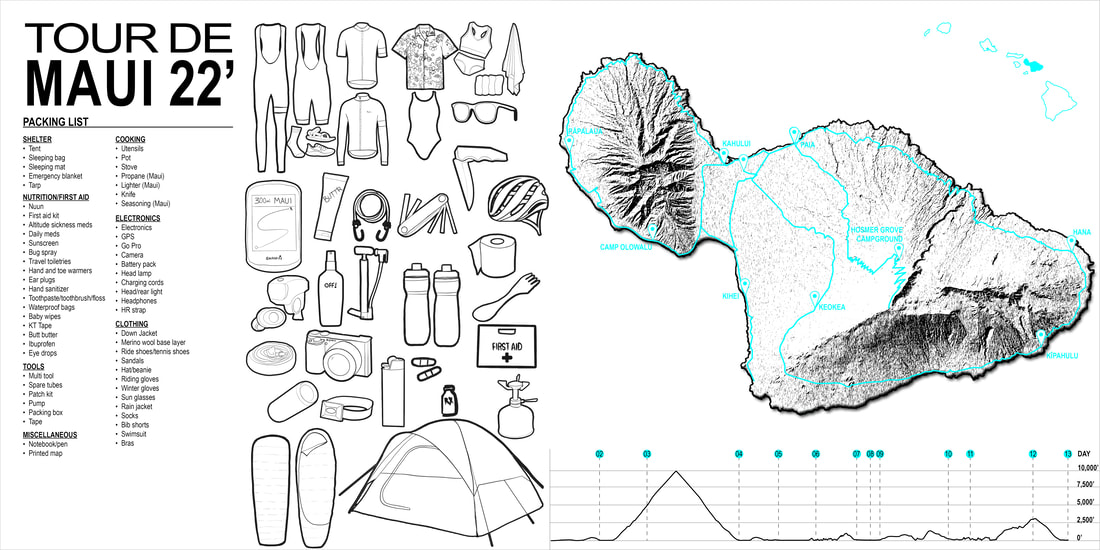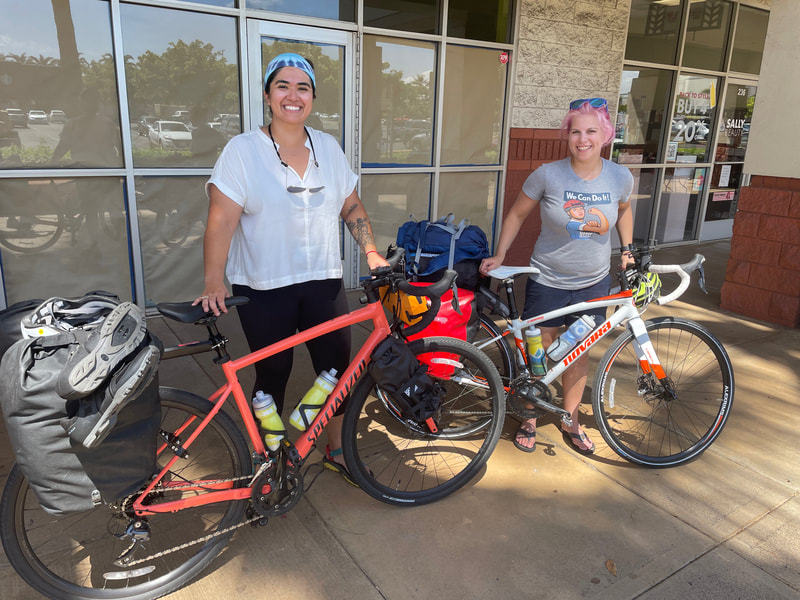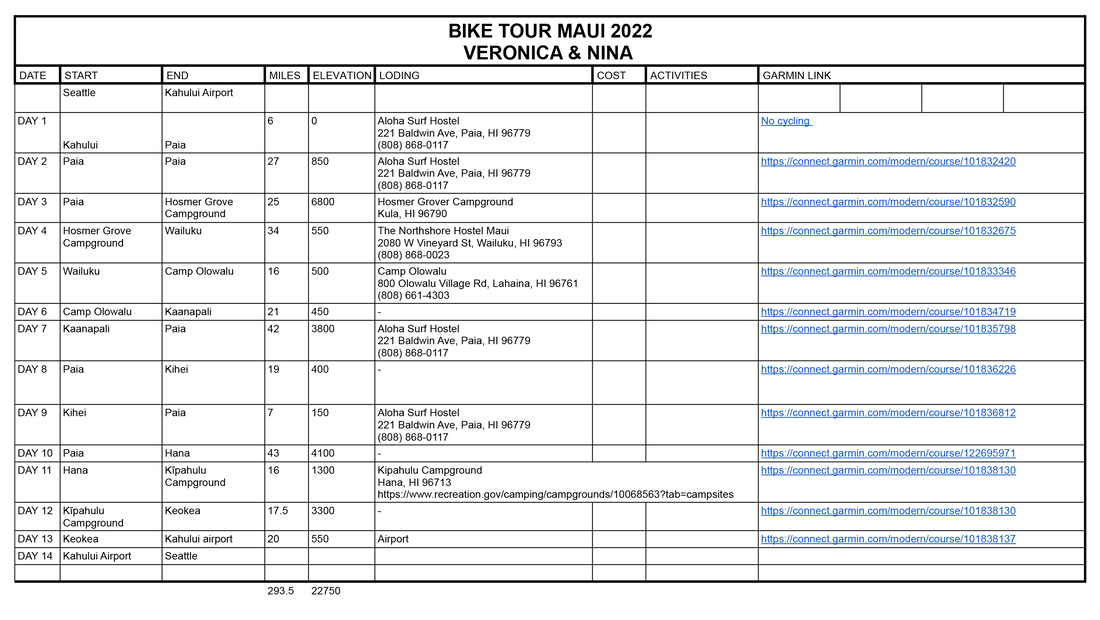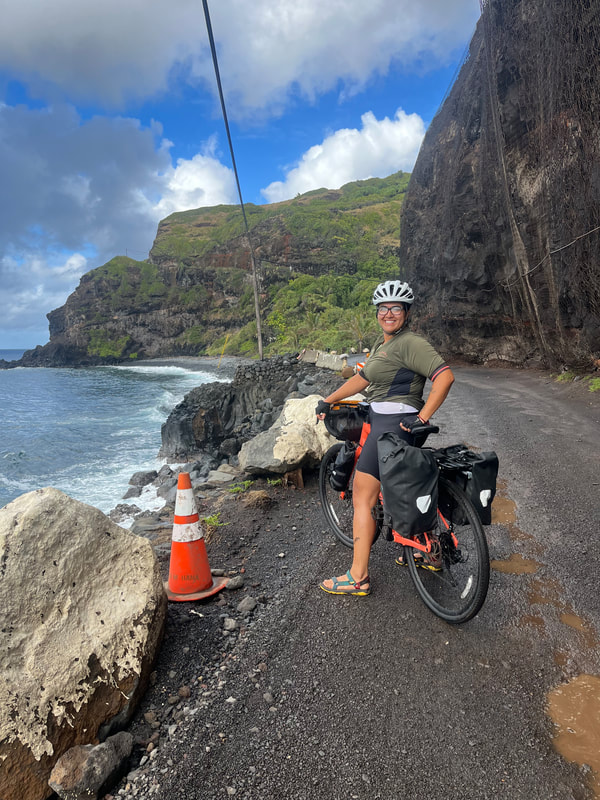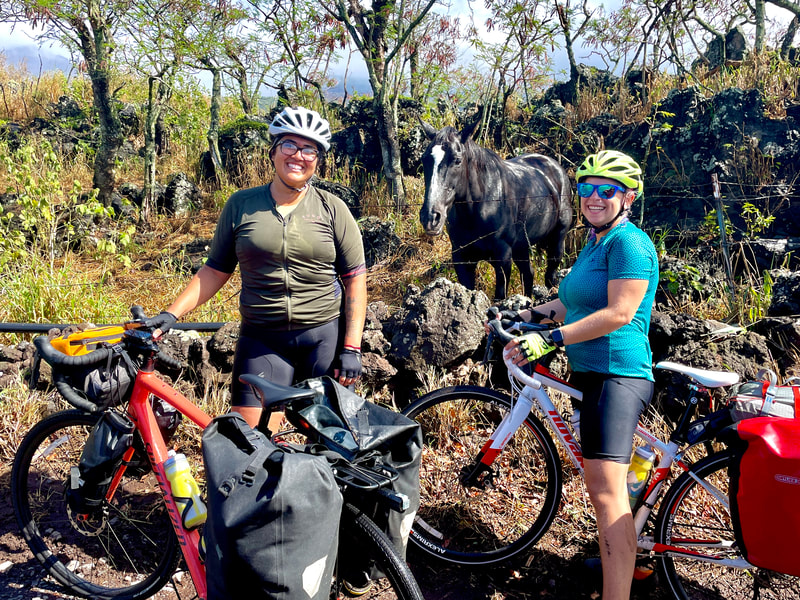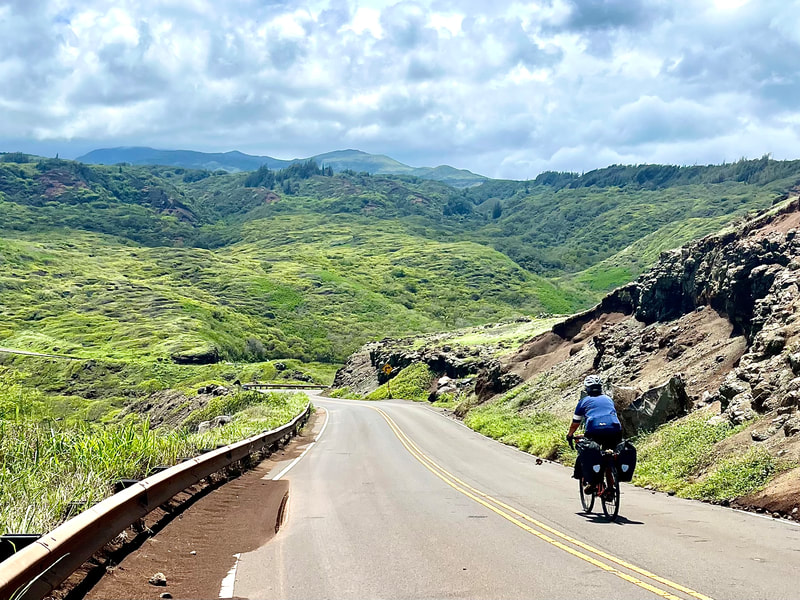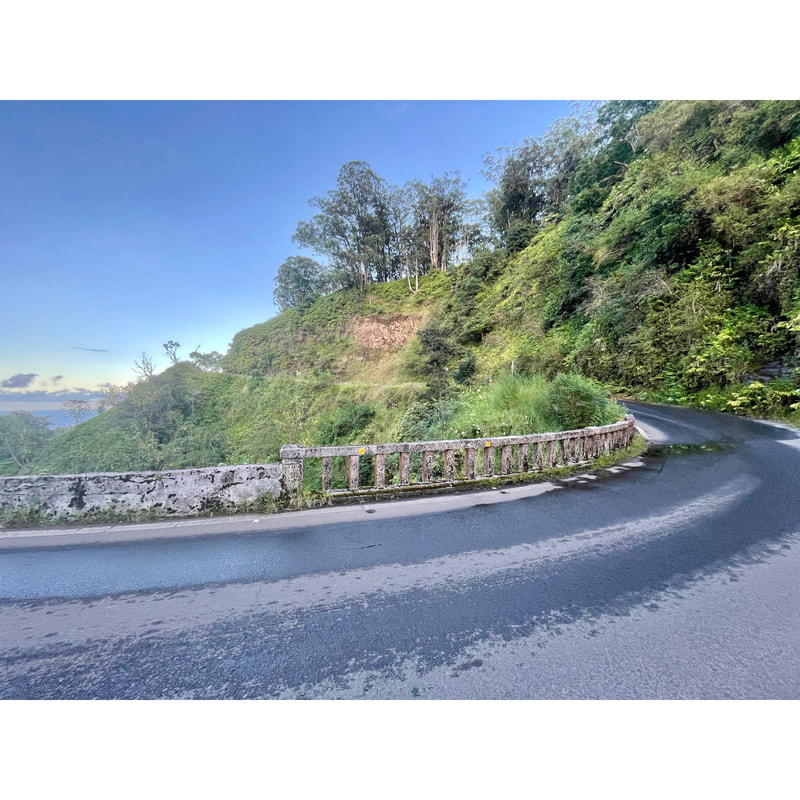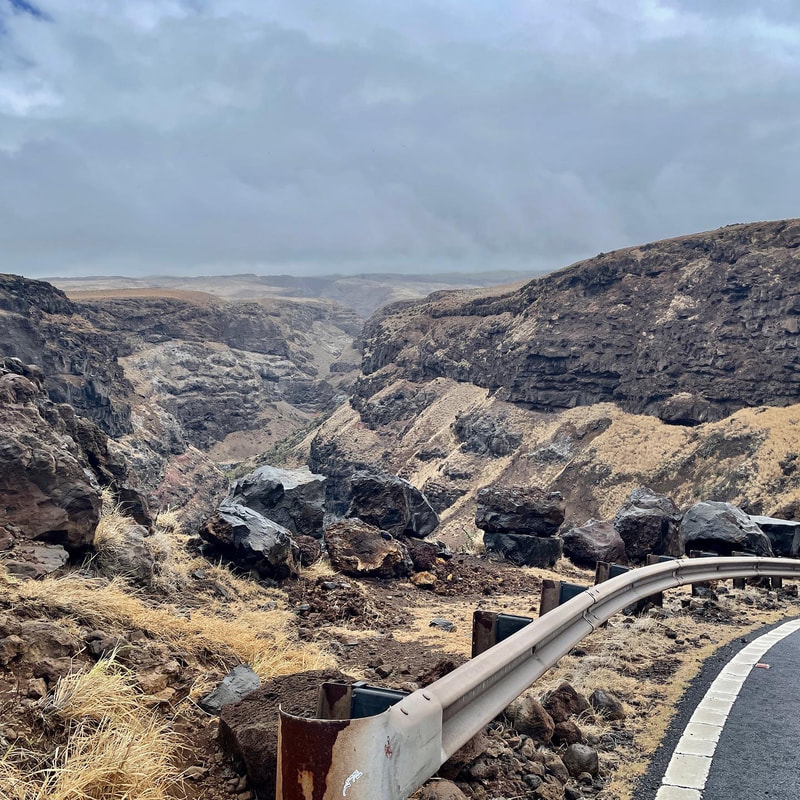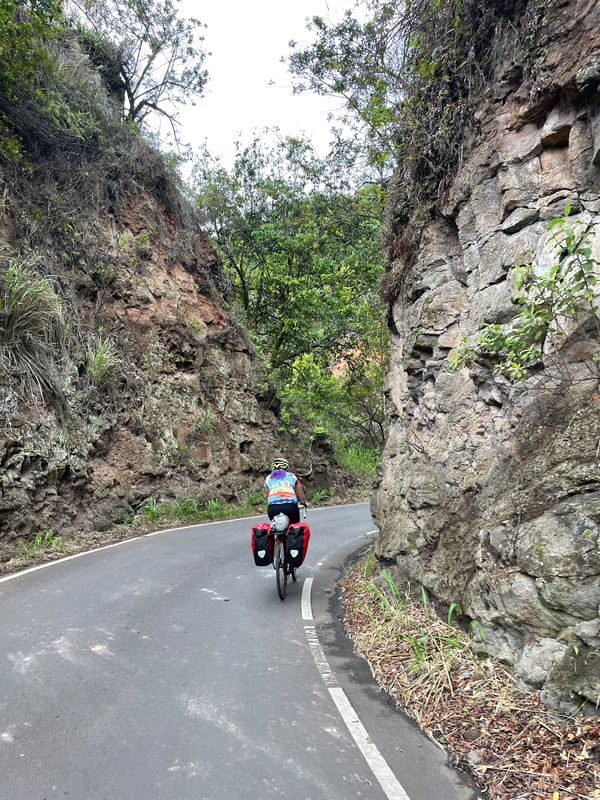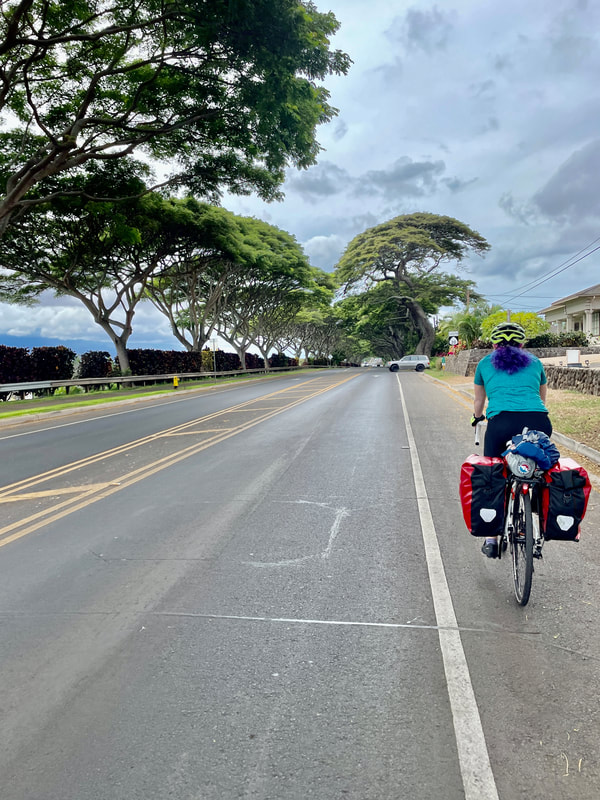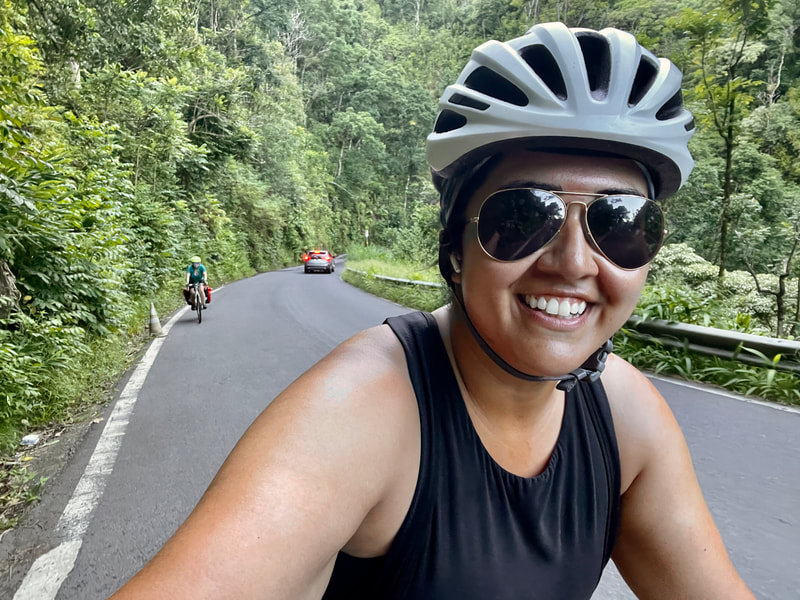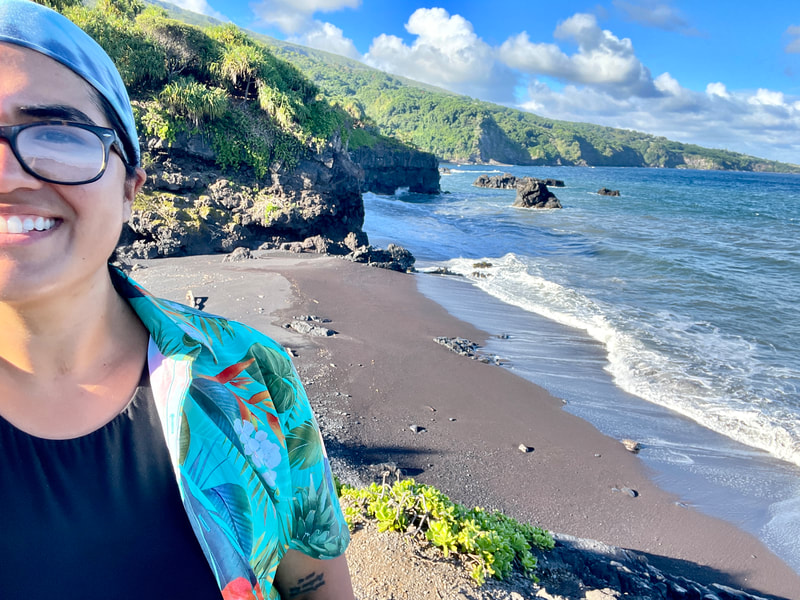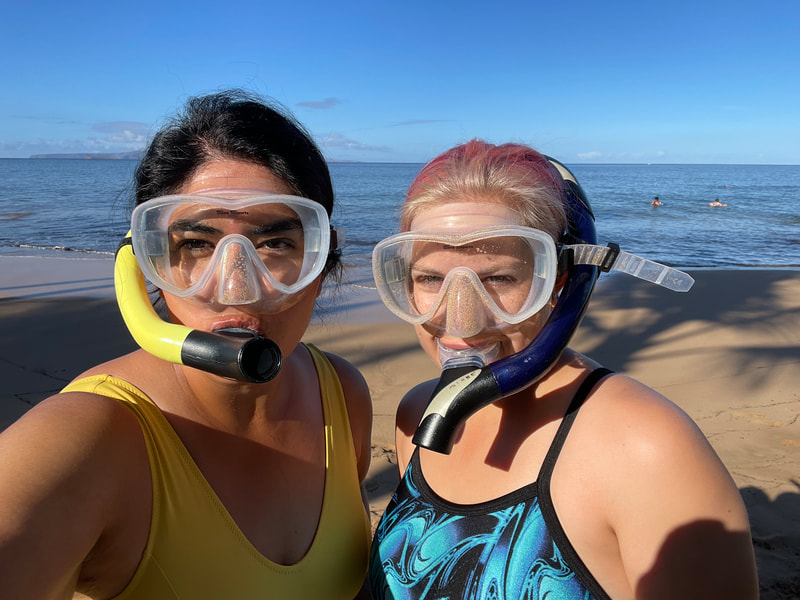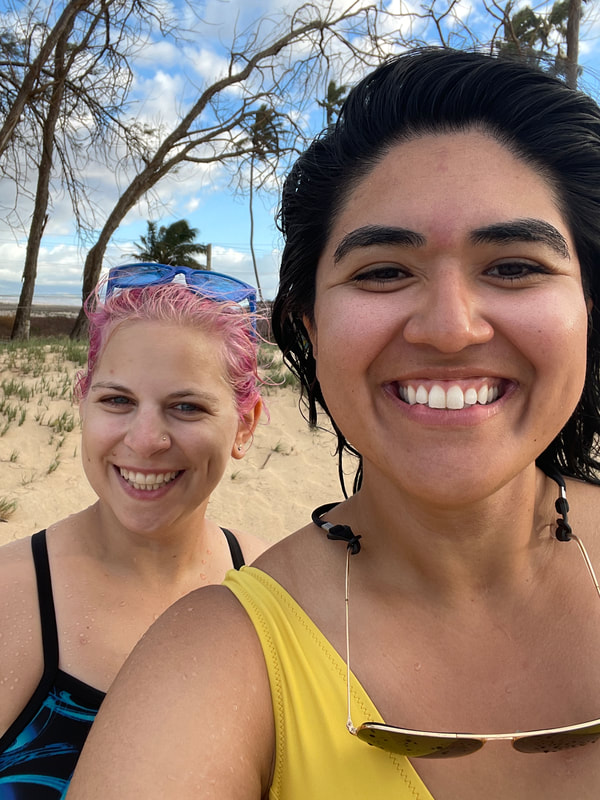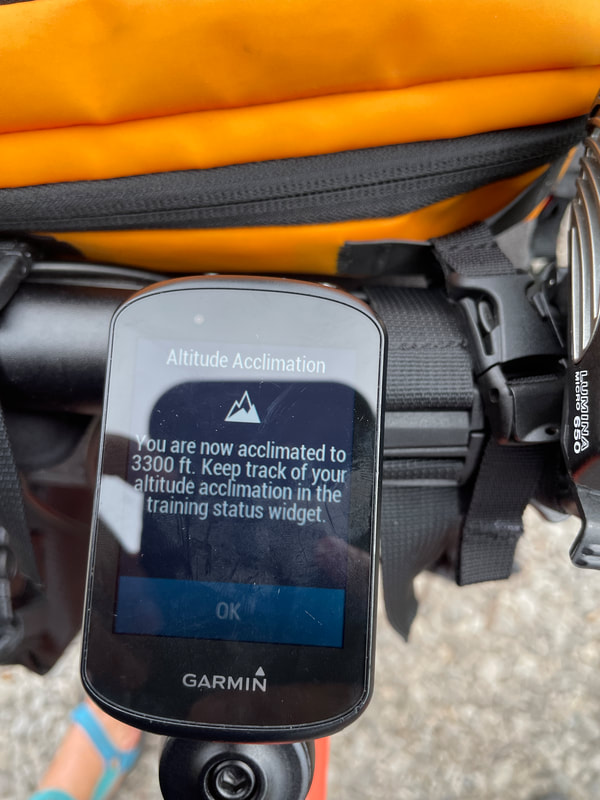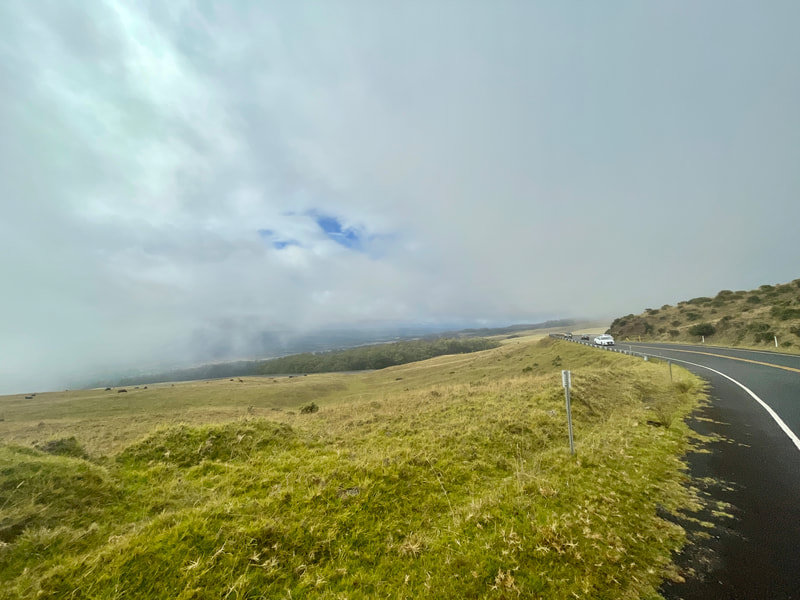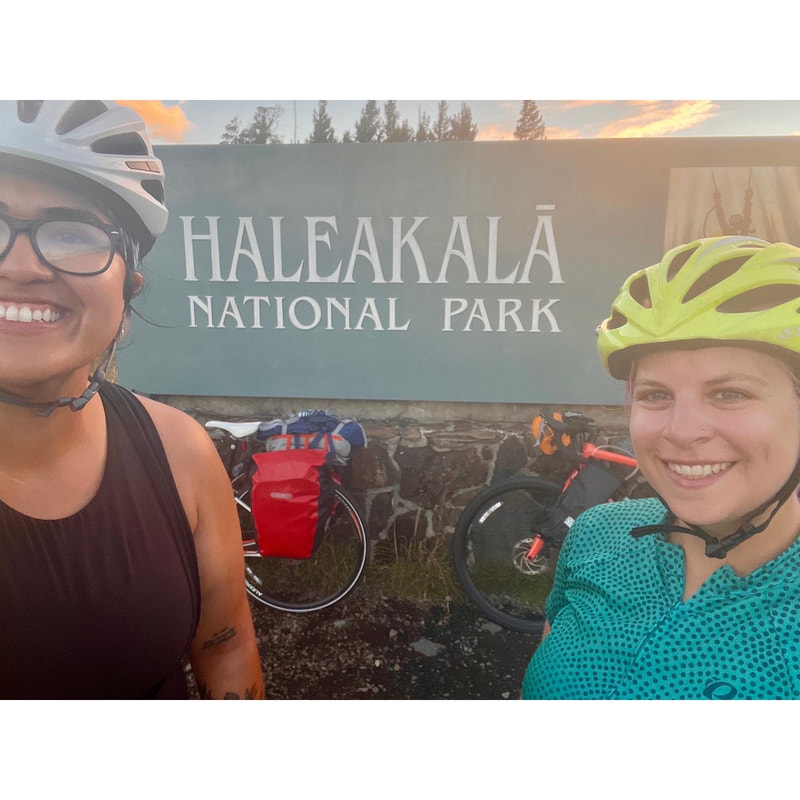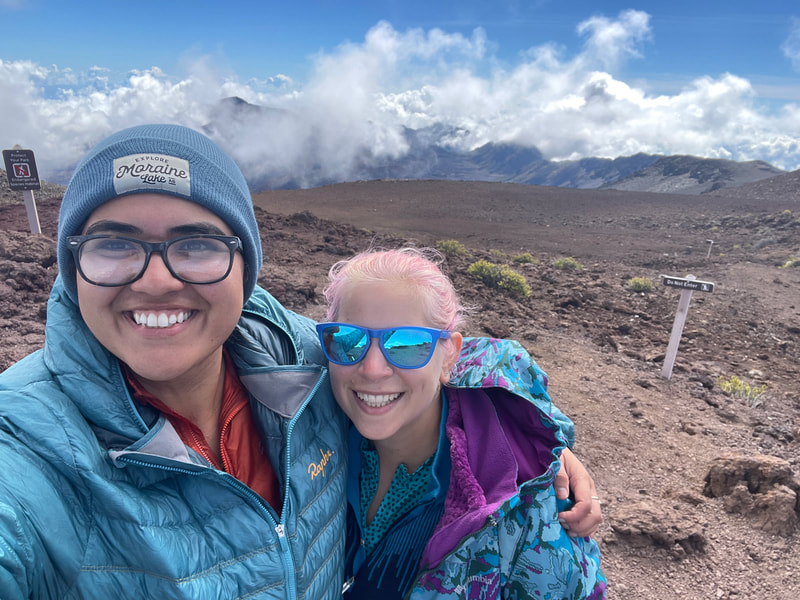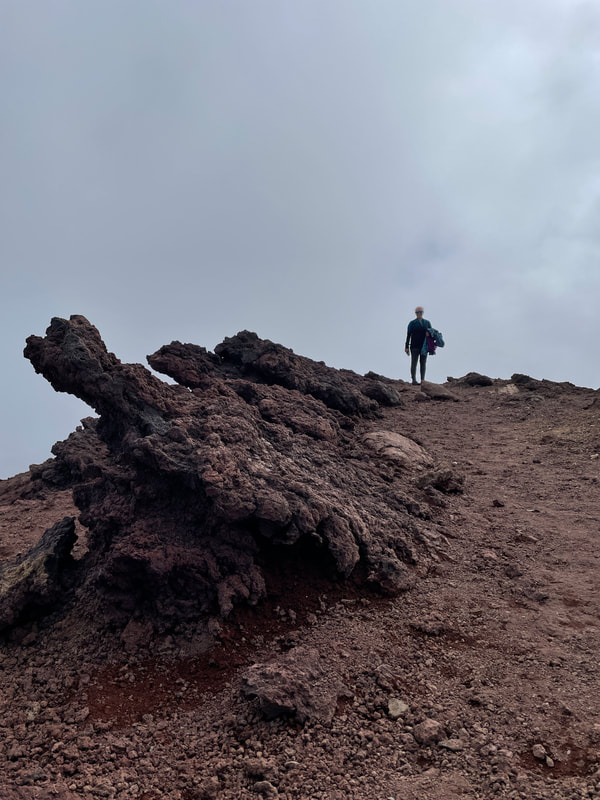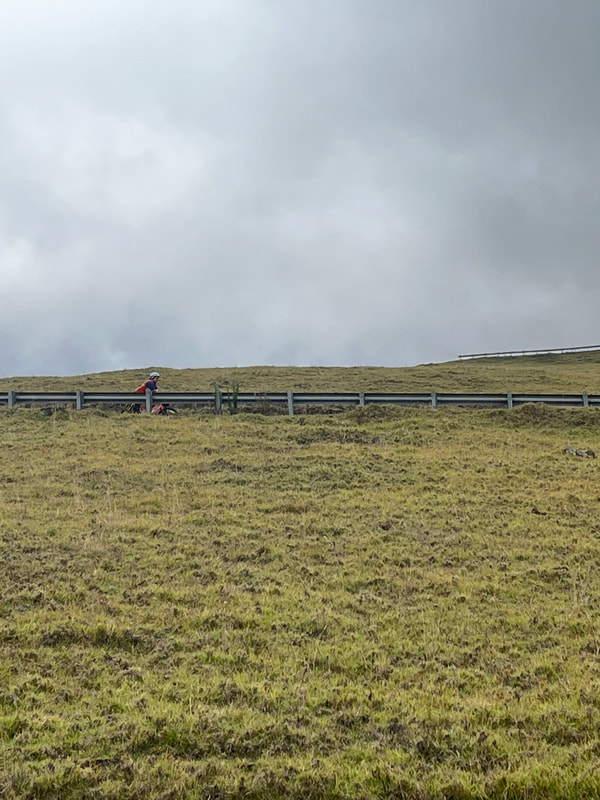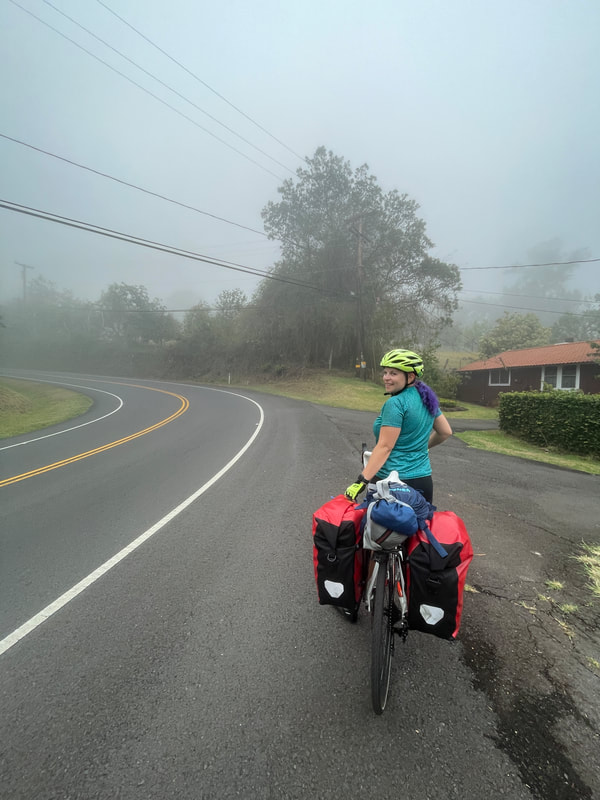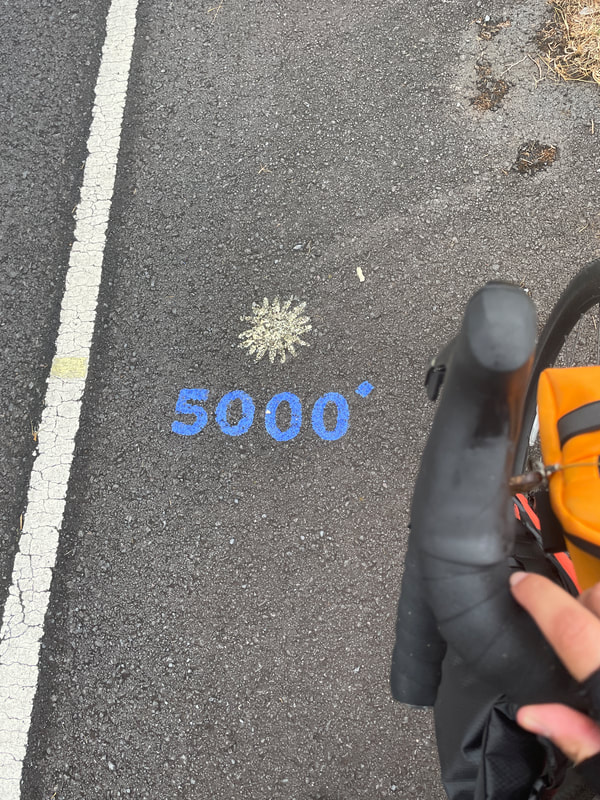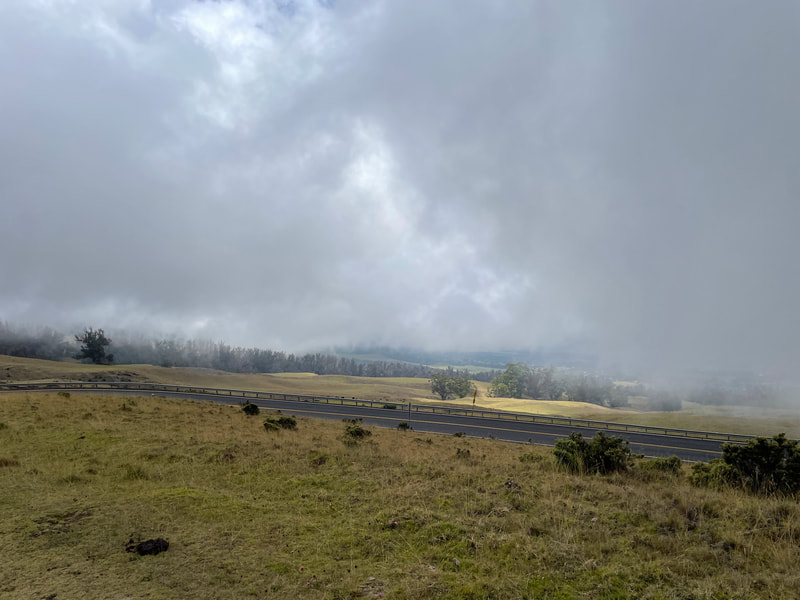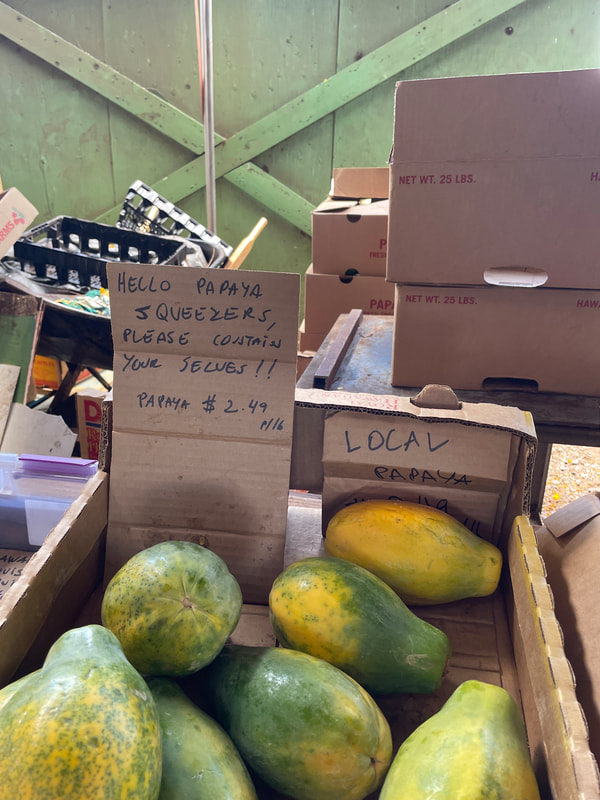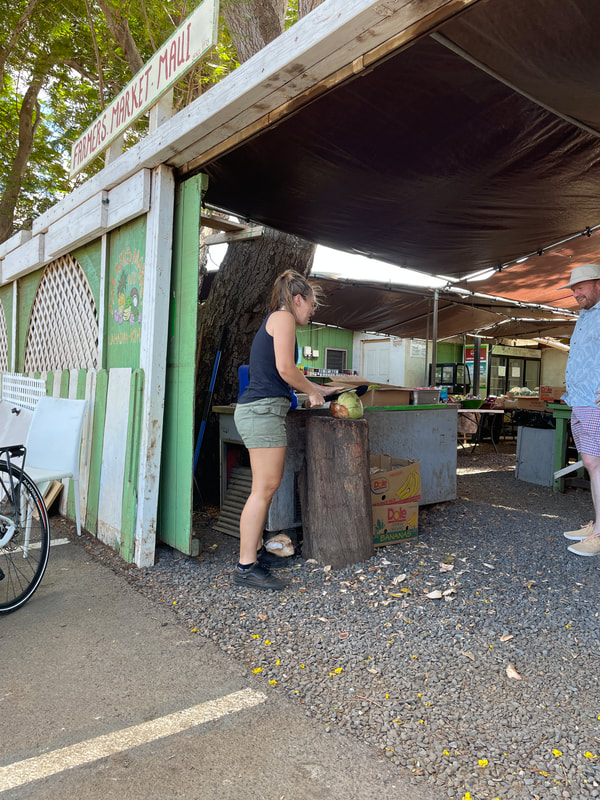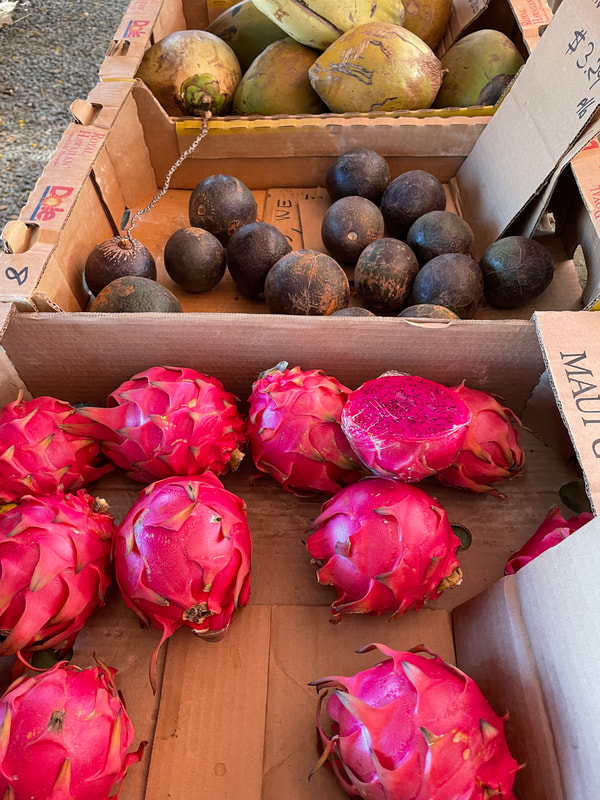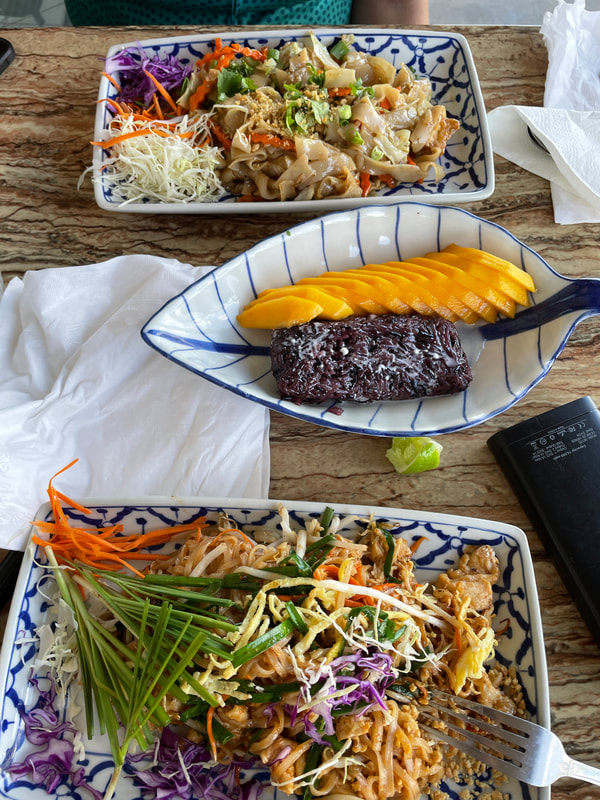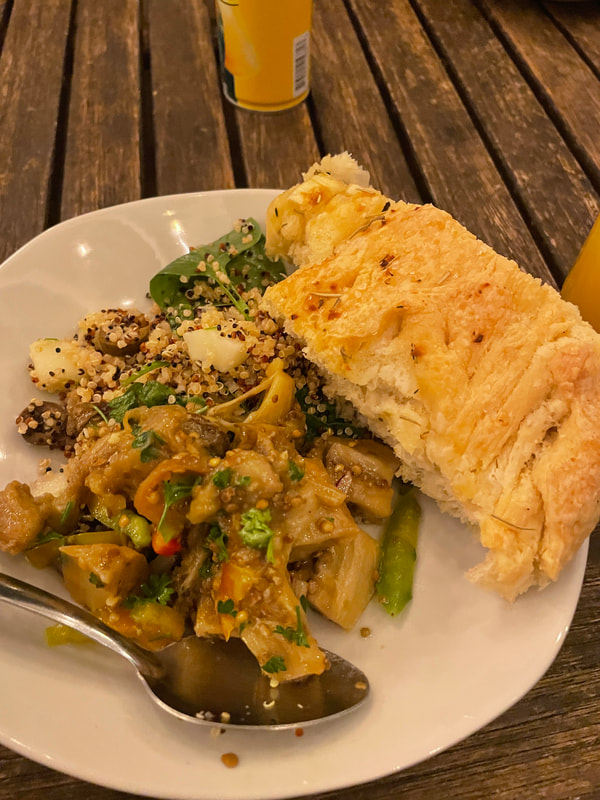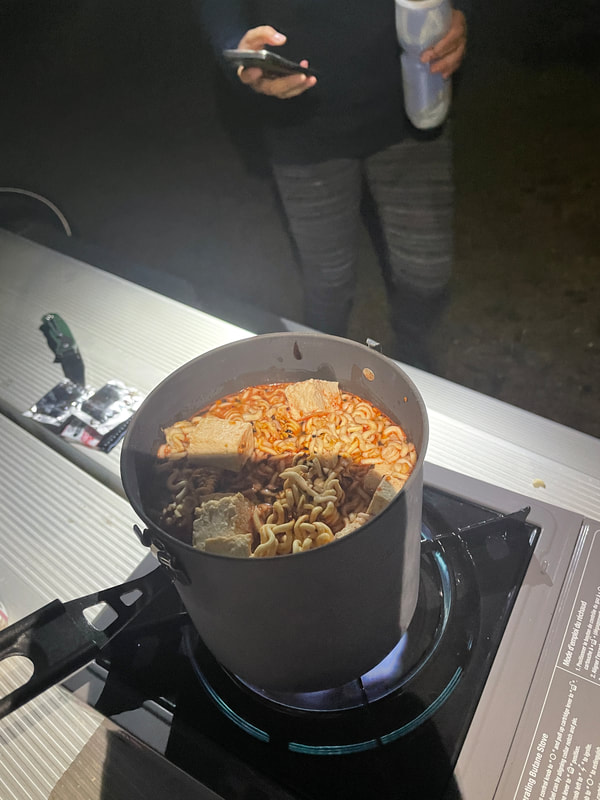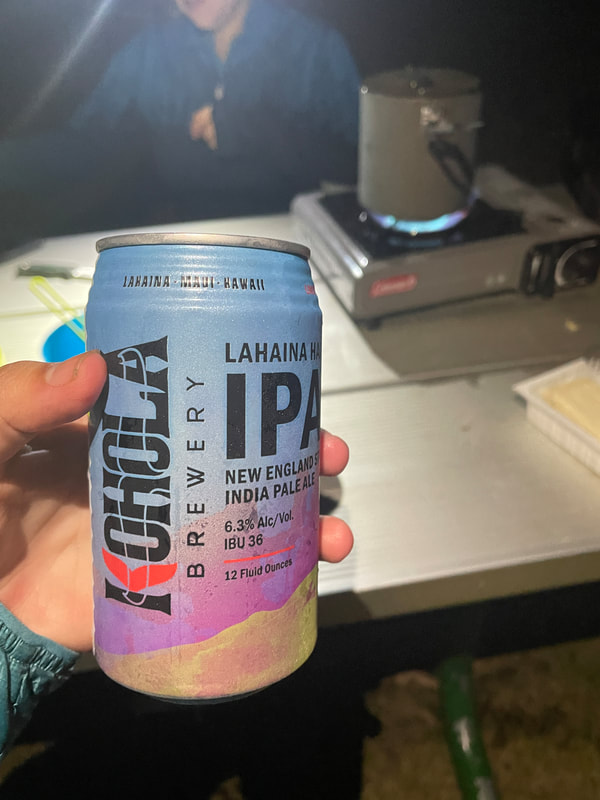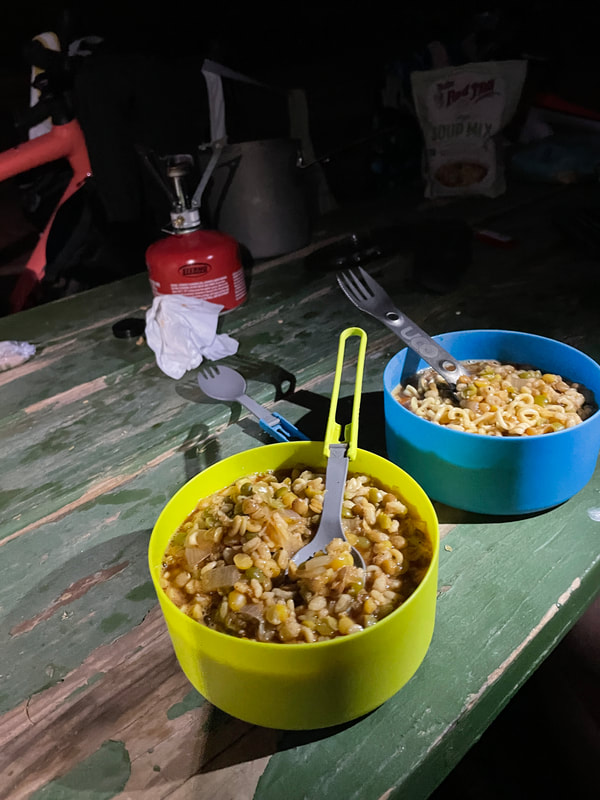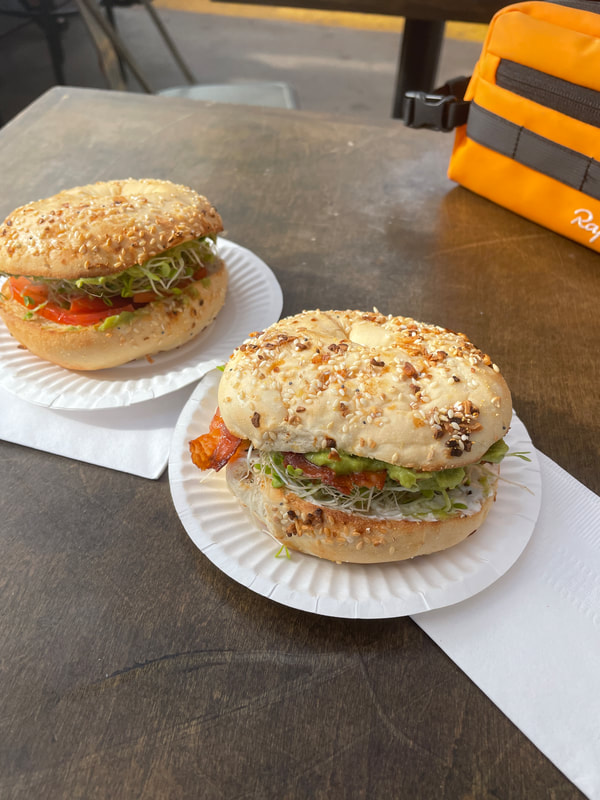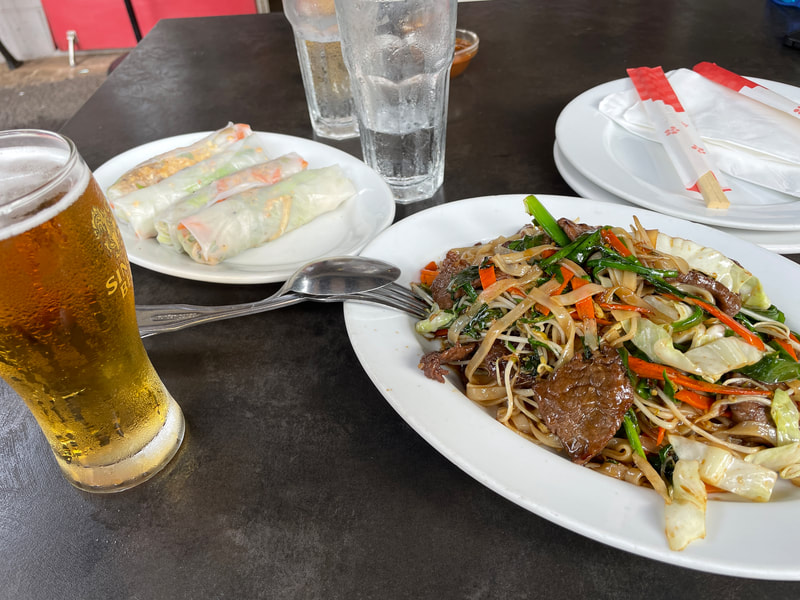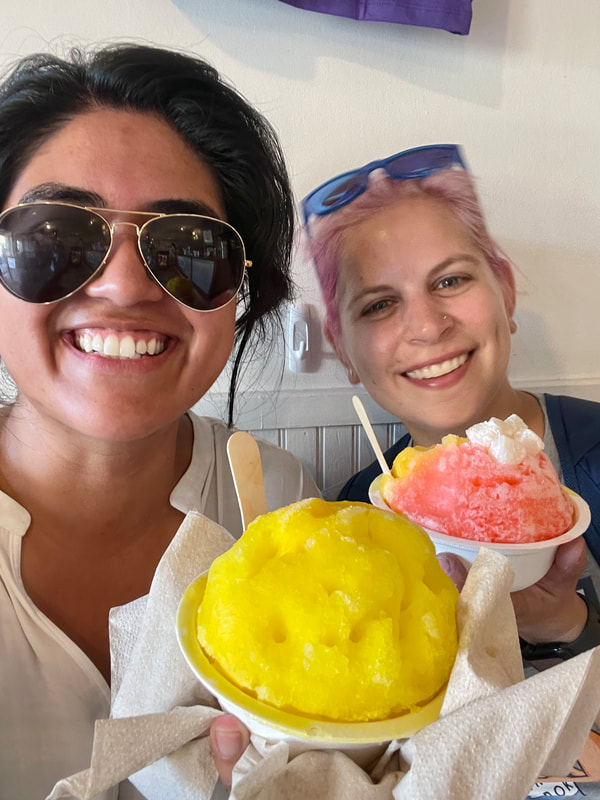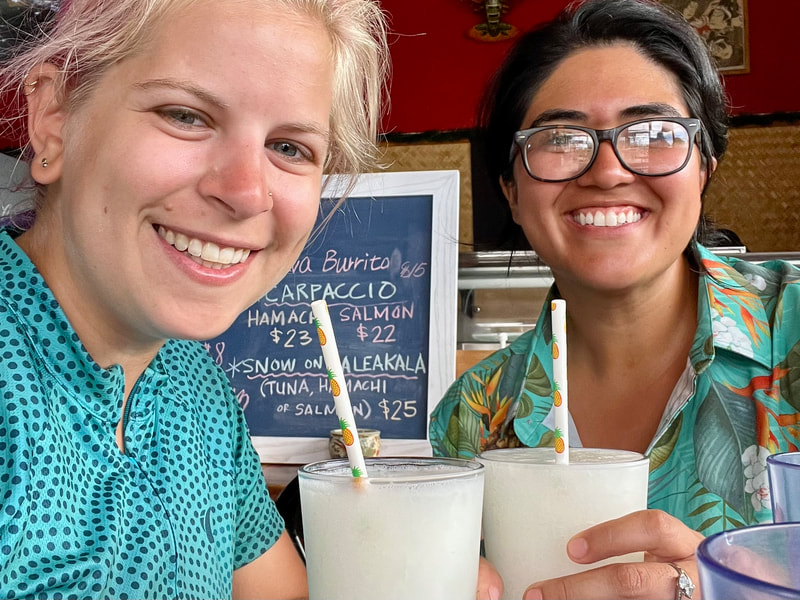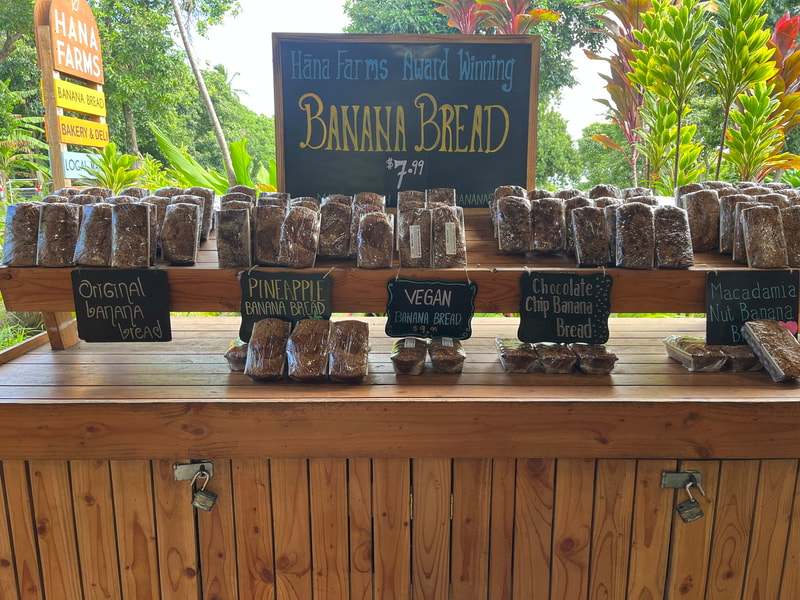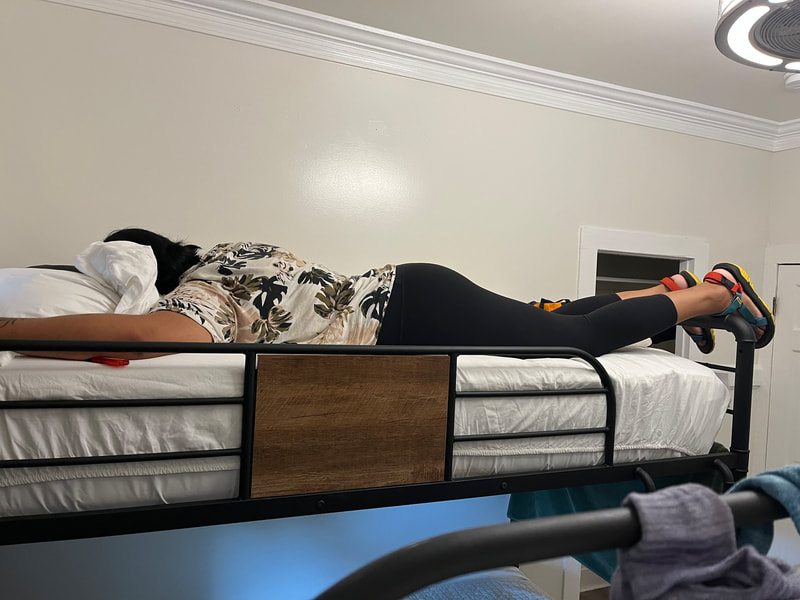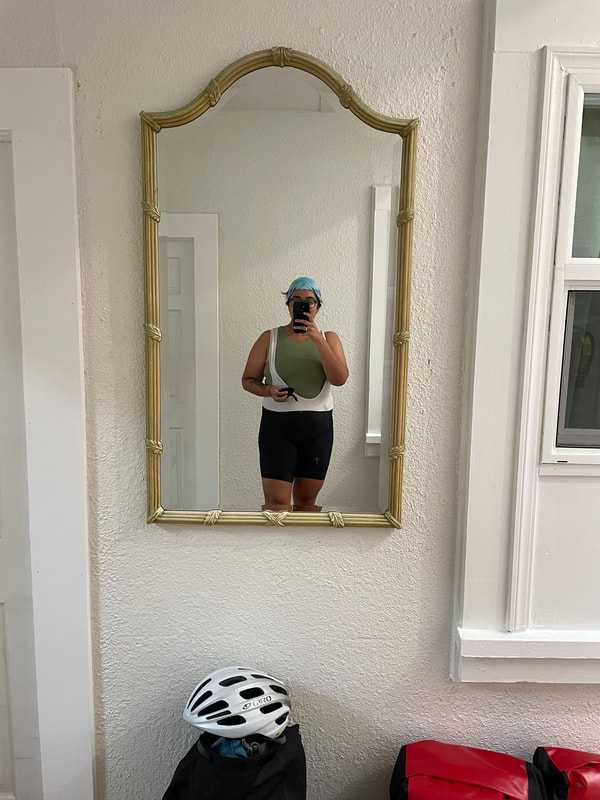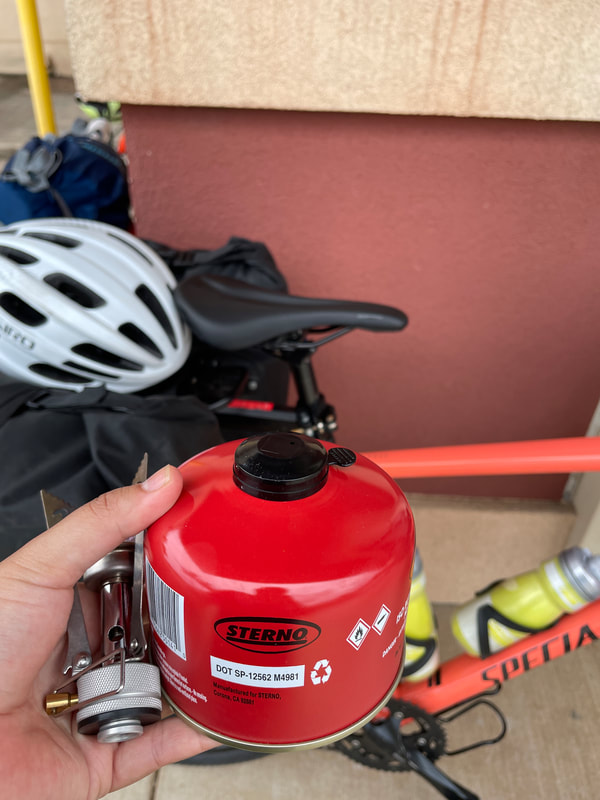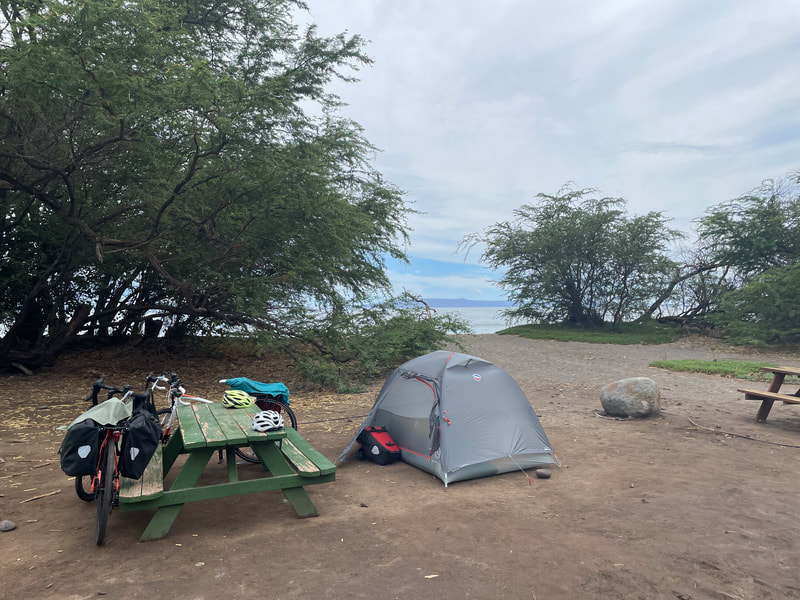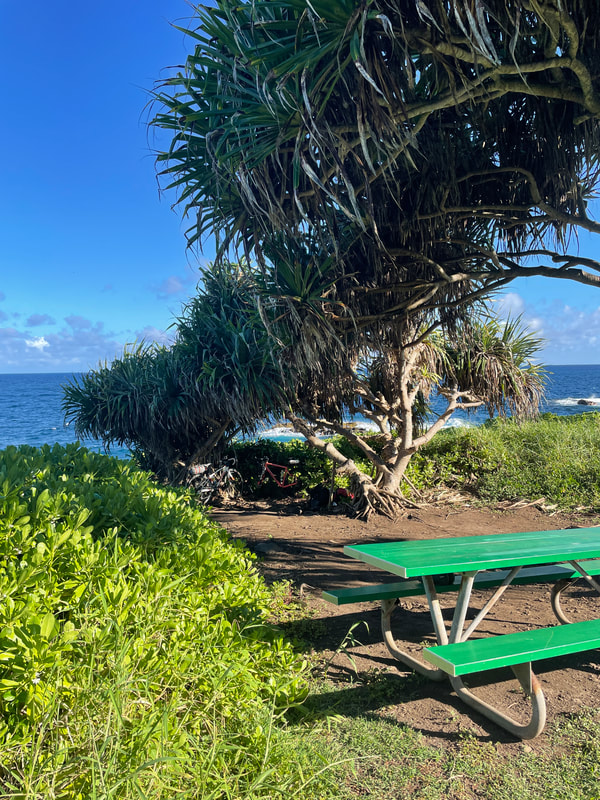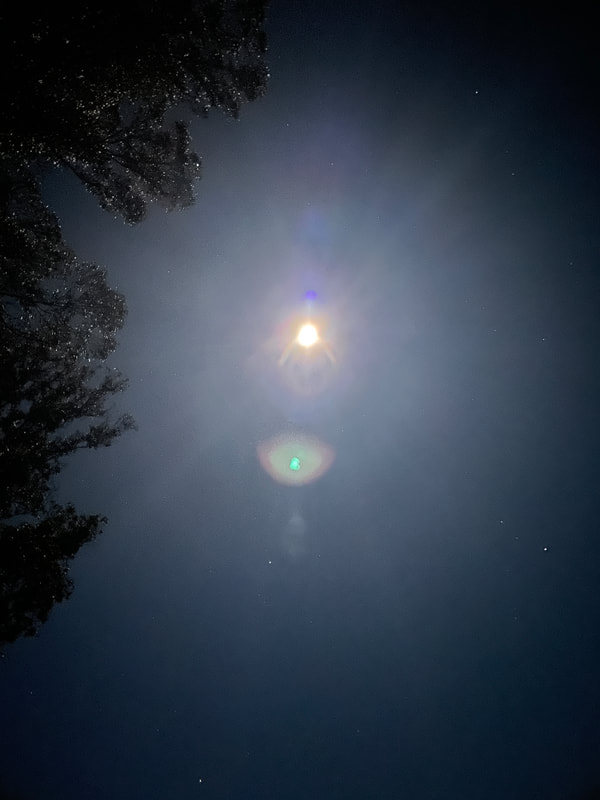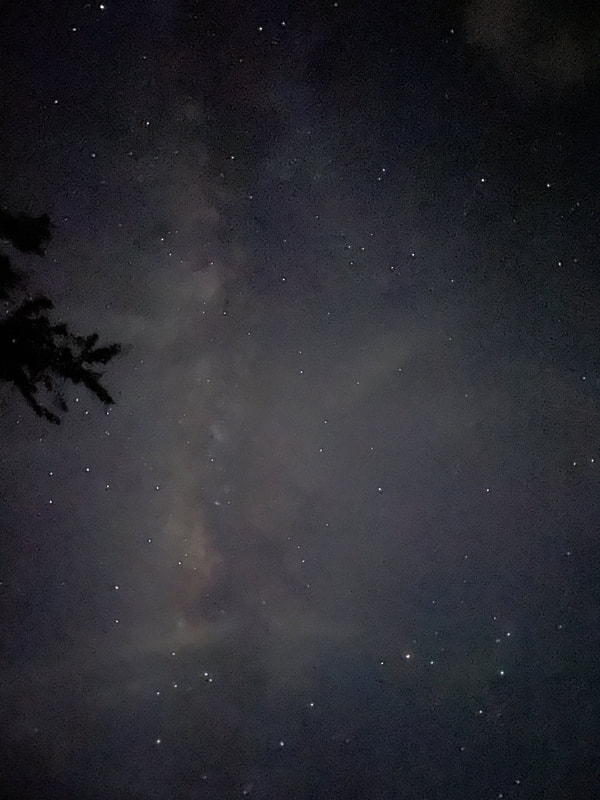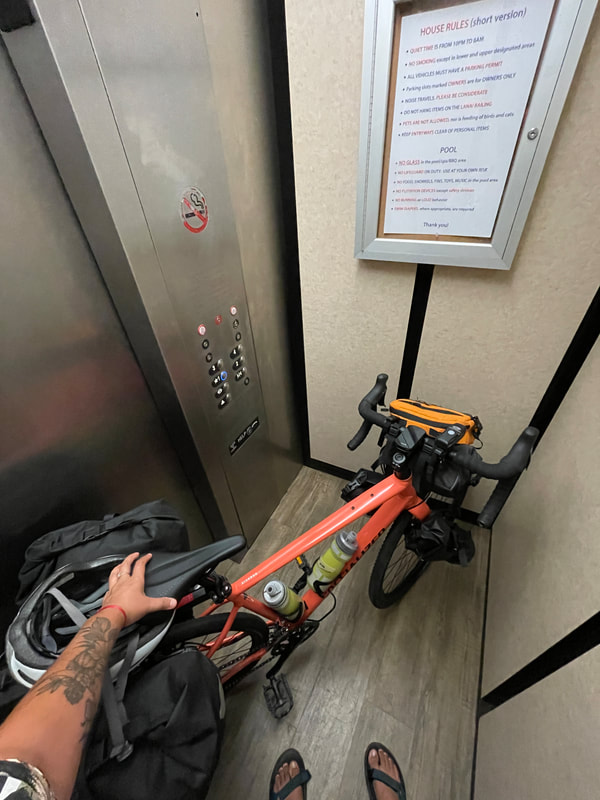TOUR DE MAUI 2022
Location: Maui, Hawaii
Total Miles: 300 Miles
Date: September 2022
Duration: 14 Days
Level: Fucking difficult but beautiful
Total Miles: 300 Miles
Date: September 2022
Duration: 14 Days
Level: Fucking difficult but beautiful
Summary:
Our 300-mile bike tour around Maui was a journey of exploration and appreciation of the island's beauty and diversity of nature. Packing our bikes came easily after touring Alaska, allowing us to focus solely on the tour. The picturesque, multicolored sand beaches and snorkeling for the first time were surreal. The Hawaiian’s relationship with the ocean was unique and special, and we were grateful to be a part of it. The diverse typologies of the island, altitude changes, strong wind patterns, and heat of the sun made us feel alive. The days were hot and humid, the air thick with moisture that clung to our skin. But as the sun set, the air began to cool, and we found ourselves enveloped in a blanket of cool, refreshing air. We took in the vistas that stretched out before us from the summit of Haleakala and encountered others who shared our love for adventure and exploration.
Our 300-mile bike tour around Maui was a journey of exploration and appreciation of the island's beauty and diversity of nature. Packing our bikes came easily after touring Alaska, allowing us to focus solely on the tour. The picturesque, multicolored sand beaches and snorkeling for the first time were surreal. The Hawaiian’s relationship with the ocean was unique and special, and we were grateful to be a part of it. The diverse typologies of the island, altitude changes, strong wind patterns, and heat of the sun made us feel alive. The days were hot and humid, the air thick with moisture that clung to our skin. But as the sun set, the air began to cool, and we found ourselves enveloped in a blanket of cool, refreshing air. We took in the vistas that stretched out before us from the summit of Haleakala and encountered others who shared our love for adventure and exploration.
|
|
|
|
|
The Ride:
Distances varied each day between 15 miles to 50 miles. The diverse landscapes and typologies encountered along the way, including desolate volcanic terrain, dense forests, narrow gravel roads, and hash elements caused frequent maintenance to our bikes. On two occasions we put our egos aside and found ourselves in need of hitchhiking to our destination. We were fortunate enough to encounter a kind priest on the remote northwest side of the island who graciously gave us a ride to our next stop and a newlywed couple from Portland who drove us the last 3,000 feet to the summit of Haleakala. Most of the infrastructure is well-paved with wide shoulders for your bike and or designated bike lanes. Parts of the island remain remote with one-lane gravel roads. These paths angulate organically along the steep cliffside, consist of narrow switchbacks, and signage warning of the potential rockfalls is scattered throughout. As we rode through the island, we encountered a cornucopia of flavors and aromas that stimulated our senses and taste buds. We savored sweet fresh mangoes, coconuts, and guavas. We were struck by the diversity of the island's flora and fauna, from towering palm trees to vibrant coral reefs. |
Haleakala Summit:
Our ascent of the Haleakala summit was a journey of endurance and perseverance. Nina and I woke up early to beat the heat and began the grueling 10,000 foot climb. We navigated the winding roads and steep inclines with determination. The experience of cloud inversion was ethereal, and we marveled at the sight of clouds swirling around us. On our journey, the air grew thinner as we approached the 5,000-foot mark. The moment we passed through the clouds at 6,000 feet, we felt like we had died and gone to heaven. We reached the campground at 7,000 feet, the landscape shifted dramatically and it looked like as if we were camping in the Pacific North West. The ride was tough, but the breathtaking views of the island from the summit made it all worth it. The summit was a sight to behold, and proud of our accomplishment.
Our ascent of the Haleakala summit was a journey of endurance and perseverance. Nina and I woke up early to beat the heat and began the grueling 10,000 foot climb. We navigated the winding roads and steep inclines with determination. The experience of cloud inversion was ethereal, and we marveled at the sight of clouds swirling around us. On our journey, the air grew thinner as we approached the 5,000-foot mark. The moment we passed through the clouds at 6,000 feet, we felt like we had died and gone to heaven. We reached the campground at 7,000 feet, the landscape shifted dramatically and it looked like as if we were camping in the Pacific North West. The ride was tough, but the breathtaking views of the island from the summit made it all worth it. The summit was a sight to behold, and proud of our accomplishment.
Water:
Riding our bikes in high humidity and heat was a task that demanded endurance and a constant need for drinking water. Hydration was extremely important. Finding accessible drinkable water when riding our bikes was an ordeal that tested our patience. We prepared by mapping specific locations to refill and added front packs to my bike frame that allowed me to carry four extra liters of water. We were fortunate to find additional refill sources, such as at a veteran's graveyard and a hotel bar during our summit up Haleakala. Drinking coconut water for additional electrolytes had my skin glowing by the end of the trip and strangers would sometimes pull over to provide us with cold beverages. One of my favorite memories was on the southeast of the island. We were taking a break at a remote Museum, when a couple of women approached us and gave us extra Gatorades, and offered cans of wine they had packed in their car. They were supportive of our journey. I excitedly accepted their Gatorades but had to unfortunately decline the wine.
Food:
Nutrition in Maui was filled with delectable flavors. We savored the sweetness of ripe mangoes, the creaminess of coconuts, tanginess of guavas. We indulged in the flavors of Hawaiian barbeque and fresh fish that melted in our mouths. The culinary delights of Maui were a feast for the senses. The island's cuisine was an experience in and of itself and we couldn't help but enjoy each bite.
Riding our bikes in high humidity and heat was a task that demanded endurance and a constant need for drinking water. Hydration was extremely important. Finding accessible drinkable water when riding our bikes was an ordeal that tested our patience. We prepared by mapping specific locations to refill and added front packs to my bike frame that allowed me to carry four extra liters of water. We were fortunate to find additional refill sources, such as at a veteran's graveyard and a hotel bar during our summit up Haleakala. Drinking coconut water for additional electrolytes had my skin glowing by the end of the trip and strangers would sometimes pull over to provide us with cold beverages. One of my favorite memories was on the southeast of the island. We were taking a break at a remote Museum, when a couple of women approached us and gave us extra Gatorades, and offered cans of wine they had packed in their car. They were supportive of our journey. I excitedly accepted their Gatorades but had to unfortunately decline the wine.
Food:
Nutrition in Maui was filled with delectable flavors. We savored the sweetness of ripe mangoes, the creaminess of coconuts, tanginess of guavas. We indulged in the flavors of Hawaiian barbeque and fresh fish that melted in our mouths. The culinary delights of Maui were a feast for the senses. The island's cuisine was an experience in and of itself and we couldn't help but enjoy each bite.
Camping:
Camping around Maui was an educational opportunity to connect with nature and understand the island in a way that few people ever do. We faced challenges such as limited legal campgrounds, campgrounds permanently closed due to homelessness, and the resort monopoly that does not allow for paid camping on private land such as Hipcamp. Navigating these challenges also allowed us to get well acquainted with the locals and occasionally find refuge in these new friendships.
Our advanced planning, research, and tenacity in coordinating in a different time zone allowed us to book specific campgrounds along our tour. Some nights, we would camp under the stars, surrounded by the Milky Way stretching out above us like a celestial river. Other nights, we would be woken by the sound of waves crashing against the shore, their rhythmic pulse lulling us back to sleep. In the mornings, we were awakened by the crowing of roosters, their calls echoing across the island to start our day. As we packed up our tents and prepared to hit the road, we marveled at the beauty that surrounded us, from the lush greenery of the rainforest to the stark beauty of the volcanic landscapes that dominated the island.
Hostels:
As mentioned camping was not always an option, but Maui has an array of hostels for passing travelers on a budget. Nina and I found ourselves staying in a few hostels. At each hostel, we met a diverse community, all with different backgrounds and stories to share. We met travelers from California, Texas, Canada, and Barcelona. It wasn't always easy living in these communal spaces. My thirty-year-old body at times found itself struggling to summit the top bunk bed, with its thin mattress, precariously placed ladder, and creaky frame. And there were certain nights when our younger roommates would arrive late, listening to the sound of the drunken stupor. In the mornings, we would wake up to the smell of fresh pancakes and the sound of laughter drifting from the kitchen. Breakfast was communal, and we would sit around the tables, sharing stories and making plans for the day ahead. There was something deeply satisfying about sharing a meal with these strangers who had become our temporary family. There was a sense of freedom and possibility that permeated these spaces, and we felt buoyed by the energy of the people around us.
Camping around Maui was an educational opportunity to connect with nature and understand the island in a way that few people ever do. We faced challenges such as limited legal campgrounds, campgrounds permanently closed due to homelessness, and the resort monopoly that does not allow for paid camping on private land such as Hipcamp. Navigating these challenges also allowed us to get well acquainted with the locals and occasionally find refuge in these new friendships.
Our advanced planning, research, and tenacity in coordinating in a different time zone allowed us to book specific campgrounds along our tour. Some nights, we would camp under the stars, surrounded by the Milky Way stretching out above us like a celestial river. Other nights, we would be woken by the sound of waves crashing against the shore, their rhythmic pulse lulling us back to sleep. In the mornings, we were awakened by the crowing of roosters, their calls echoing across the island to start our day. As we packed up our tents and prepared to hit the road, we marveled at the beauty that surrounded us, from the lush greenery of the rainforest to the stark beauty of the volcanic landscapes that dominated the island.
Hostels:
As mentioned camping was not always an option, but Maui has an array of hostels for passing travelers on a budget. Nina and I found ourselves staying in a few hostels. At each hostel, we met a diverse community, all with different backgrounds and stories to share. We met travelers from California, Texas, Canada, and Barcelona. It wasn't always easy living in these communal spaces. My thirty-year-old body at times found itself struggling to summit the top bunk bed, with its thin mattress, precariously placed ladder, and creaky frame. And there were certain nights when our younger roommates would arrive late, listening to the sound of the drunken stupor. In the mornings, we would wake up to the smell of fresh pancakes and the sound of laughter drifting from the kitchen. Breakfast was communal, and we would sit around the tables, sharing stories and making plans for the day ahead. There was something deeply satisfying about sharing a meal with these strangers who had become our temporary family. There was a sense of freedom and possibility that permeated these spaces, and we felt buoyed by the energy of the people around us.
